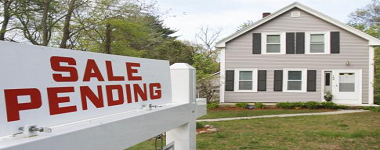The National Association of Realtors (NAR) seasonally adjusted pending home sales index rose marginally. The quote of the day from this NAR release:
… Heading into 2018, existing-home sales and price growth are forecast to slow, primarily because of the altered tax benefits of homeownership affecting some high-cost areas …

Analyst Opinion of Pending Home Sales
The rolling averages continue in negative territory. The data is very noisy and must be averaged to make sense of the situation. There is no signs of a surge in home sales, although the trends are now upward. I personally do not believe the new tax laws will affect home sales next year as most people do not consider income tax savings when buying a home.
Pending home sales are based on contract signings, and existing home sales are based on the execution of the contract (contract closing).
The NAR reported:
Econintersect‘s evaluation using unadjusted data:

From Lawrence Yun , NAR chief economist:
…. contract signings mustered a small gain in November and were up annually for the first time since June. The housing market is closing the year on a stronger note than earlier this summer, backed by solid job creation and an economy that has kicked into a higher gear. However, new buyers coming into the market are finding out quickly that their options are limited and competition is robust. Realtors® say many would-be buyers from earlier this year, stifled by tight supply and higher prices, are still trying to buy a home.
One of the biggest questions heading into 2018 is if the depressed levels of available supply can improve enough to slow price growth and make buying a home more affordable. While last month’s significant boost in existing saleswas noteworthy, it did come with some concerns. Sales prices were up 5.8 percent – more than double wage growth – and the 3.4-month supply of homes on the market was the lowest since NAR began tracking in 1999.
The strengthening economy, and expectation that more millennials will want to buy, serve as promising signs for solid homebuying demand next year, while also putting additional pressure on inventory levels and affordability. Sales do have room for growth in most areas, but nationally, overall activity could be slightly negative. Markets with high home prices and property taxes will likely feel some impact from the reduced tax benefits of owning a home.
Forecasts for existing-home sales to finish 2017 at around 5.54 million, which is an increase of 1.7 percent from 2016 (5.45 million). The national median existing-home price this year is expected to increase around 6 percent. In 2018, Yun anticipates essentially no change (a decline of 0.4 percent) in existing sales (5.52 million), and price growth to moderate to around 2 percent.











Leave A Comment